Musical Instruments – A 1933
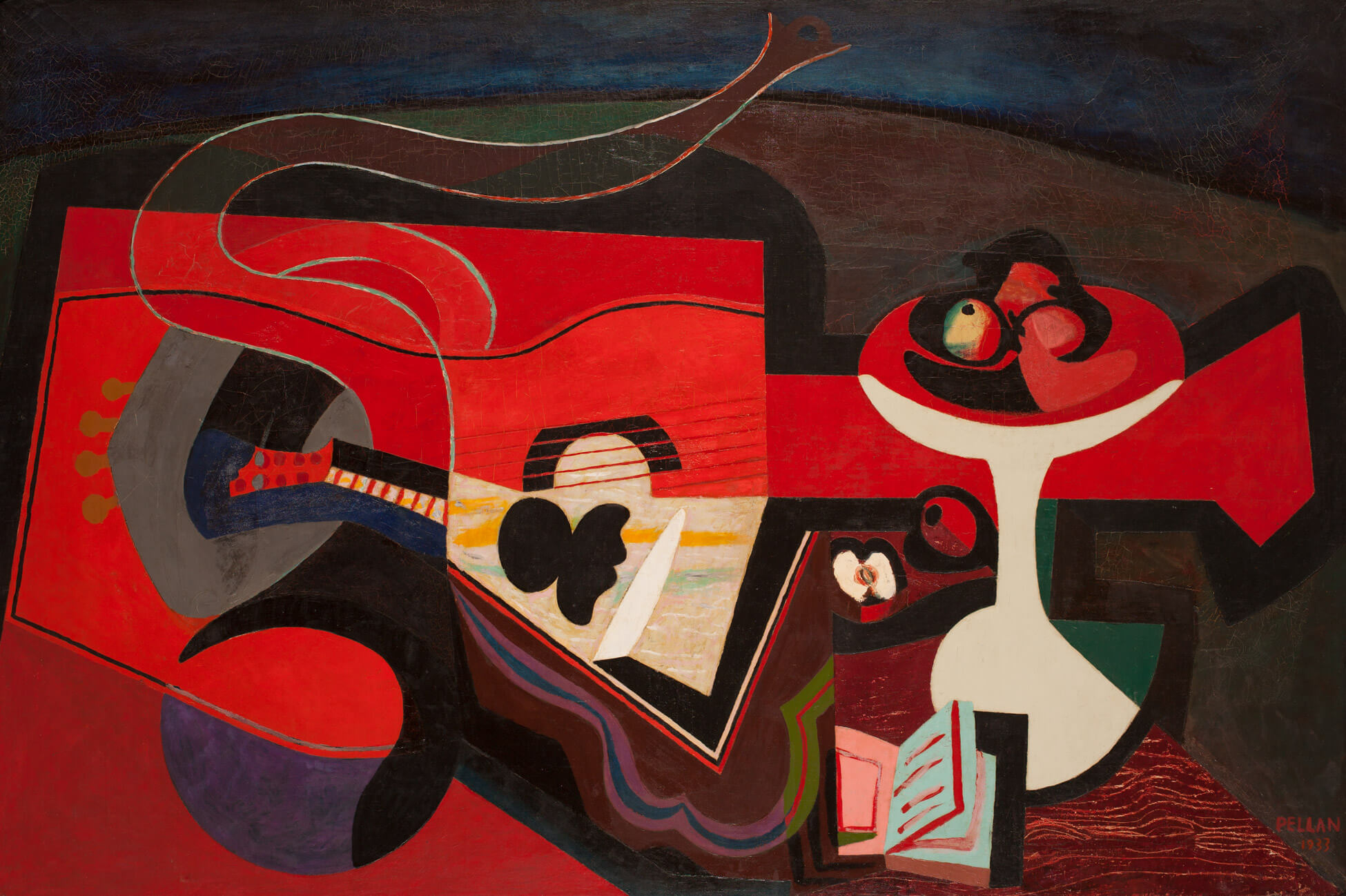
Alfred Pellan, Instruments de musique – A (Musical Instruments – A), 1933
Oil on canvas, 132 x 195.5 cm
Davis Museum at Wellesley College, Massachusetts
A geometric still life, Alfred Pellan’s Instruments de musique – A (Musical Instruments – A) shows various obscured, deformed, and disconnected objects on a table. While a book and some pieces of fruit are clearly identifiable, the instruments that dominate the left side of the canvas appear broken, the lines reduced to their simplest essence and their constituent parts superimposed on top of each other. They create a fragmented yet continuous mass, a system of lines and coloured planks. There are few if any links between the shapes on the left side of the picture and the objects on the right, and the distribution of the forms creates a collage-like impression. It was an important critical success for Pellan: at the Première grande exposition du Salon de l’art mural in 1935, a competition “limited to young technicians who were supposed to have the craftsmanship and understanding ‘to link painting with architectural values and uses,’” the jury awarded first prize to this painting.
Reflecting on this achievement many years later, Pellan said, “I was amazed when I learned that I had won, since it was an international exhibition and even the great priests of modern art, naturally not included in the competition, like Léger and Picasso, were represented.” Musical Instruments – A constitutes a major professional milestone and marks a concerted shift away from the artist’s classical education in Quebec, a change that is evident when the work is compared with Les fraises (Strawberries), 1920, or the lauded Coin du vieux Québec (A Corner of Old Quebec), 1922.
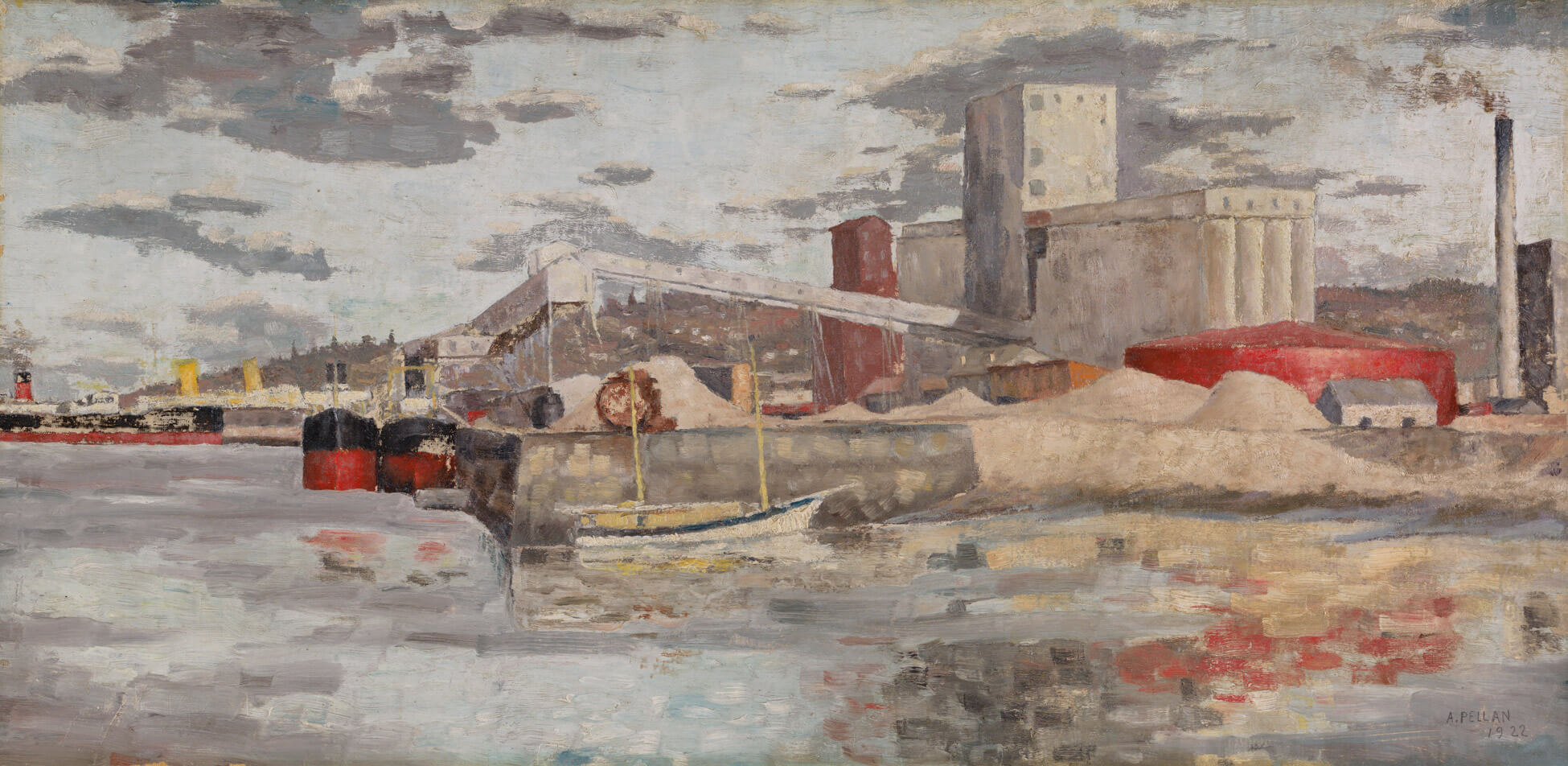
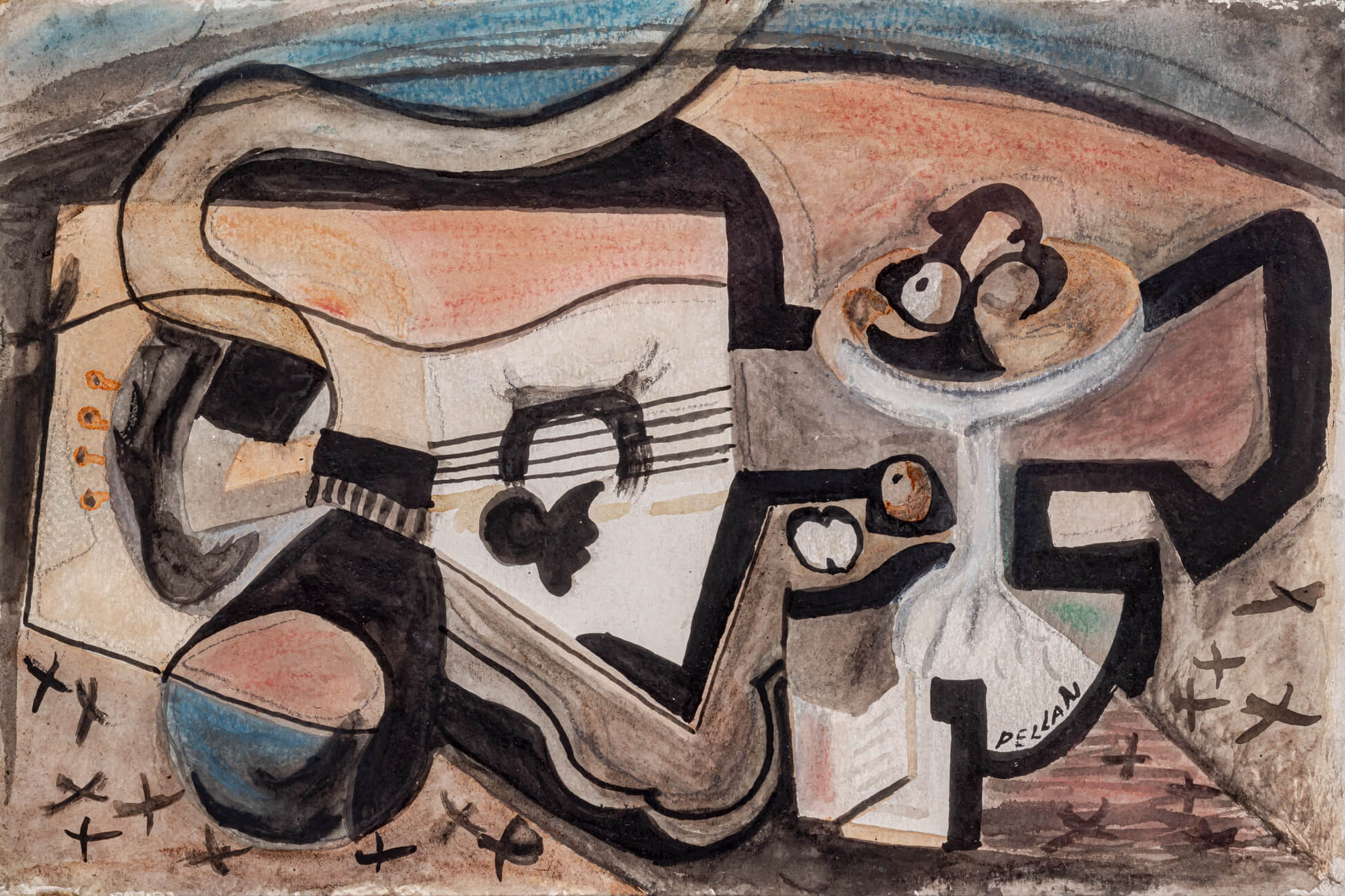
Forgoing traditional perspective, depth, and conventional representation, Musical Instruments – A reflects a Cubist-inspired approach that defined Pellan’s work at the time. Letting go of the need to depict objective reality, the artist imagines a world composed of deconstructed elements and figures, an approach associated with Synthetic Cubism. This process also involves sombre hues, uniformly applied, which complement the geometric forms—as can be seen in the preparatory study for this work. Musical Instruments – A is one of only a few paintings in which Pellan does not use vibrant and luminous colours to appeal to the viewer—with the exception of the large red mass.

 About the Author
About the Author
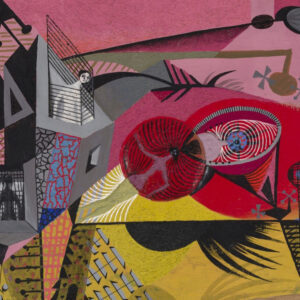 More Online Art Books
More Online Art Books
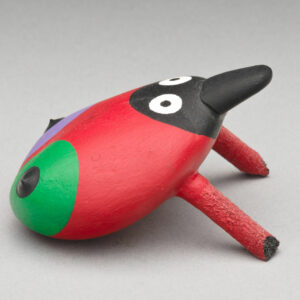 Acknowledgements
Acknowledgements